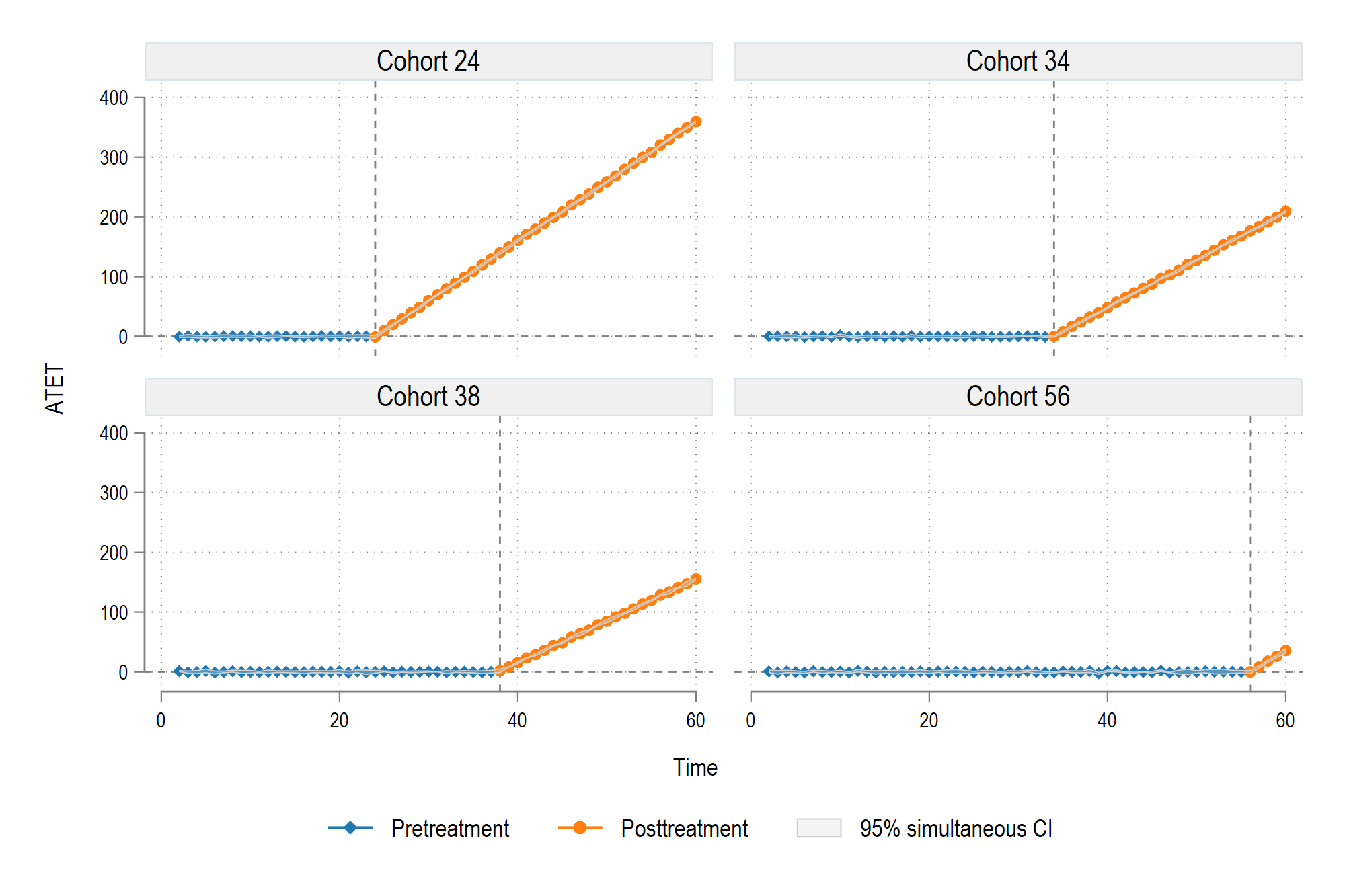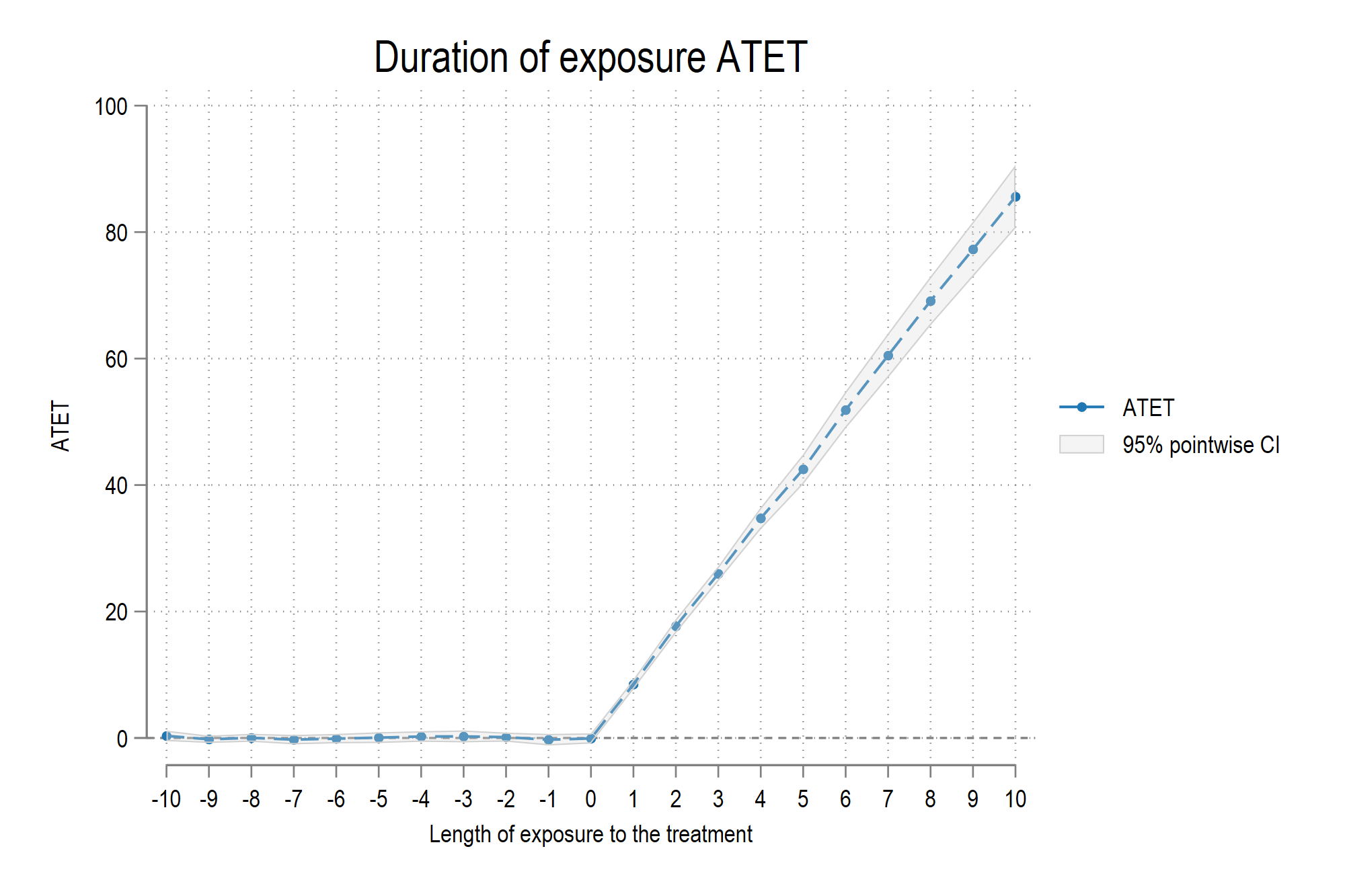hdidregress
Table of contents
Introduction
The hdidregress is a native Stata implementation of the Callaway and Sant’Anna (2021) estimators.
Installation and options
Take a look at the help file:
help hdidregress
Test the command
Please make sure that you generate the data using the script given here.
hdidregress aipw (Y) (D), group(id) time(t)
Which gives us this output (truncated for visibility):
note: variable _did_cohort, containing cohort indicators formed by treatment variable D and group variable id, was added to the dataset.
Computing ATET for each cohort and time:
Cohort 24 (59): ..........10..........20..........30..........40
..........50......... done
Cohort 34 (59): ..........10..........20..........30..........40
..........50......... done
Cohort 38 (59): ..........10..........20..........30..........40
..........50......... done
Cohort 56 (59): ..........10..........20..........30..........40
..........50......... done
Treatment and time information
Time variable: t
Time interval: 1 to 60
Control: _did_cohort = 0
Treatment: _did_cohort > 0
-------------------------------
| _did_cohort
------------------+------------
Number of cohorts | 5
------------------+------------
Number of obs |
Never treated | 420
24 | 420
34 | 540
38 | 180
56 | 240
-------------------------------
Heterogeneous treatment-effects regression Number of obs = 1,800
Estimator: Augmented IPW
Treatment level: id
Control group: Never treated
(Std. err. adjusted for 30 clusters in id)
------------------------------------------------------------------------------
| Robust
Cohort | ATET std. err. z P>|z| [95% conf. interval]
-------------+----------------------------------------------------------------
24 |
t |
2 | -.39113 .6457591 -0.61 0.545 -1.656795 .8745346
3 | .8232405 .8044651 1.02 0.306 -.7534822 2.399963
4 | -.3047077 .8333206 -0.37 0.715 -1.937986 1.328571
5 | -.7199999 .7078829 -1.02 0.309 -2.107425 .667425
6 | -.3778785 .8092475 -0.47 0.641 -1.963974 1.208217
7 | .4043196 .8315512 0.49 0.627 -1.225491 2.03413
8 | .4941654 .6653089 0.74 0.458 -.8098161 1.798147
9 | .2480164 .7772209 0.32 0.750 -1.275309 1.771341
10 | .1568992 .9086469 0.17 0.863 -1.624016 1.937814
11 | -.3701695 .4231334 -0.87 0.382 -1.199496 .4591566
12 | -.4127239 .9235575 -0.45 0.655 -2.222863 1.397416
13 | .4473205 .7594518 0.59 0.556 -1.041178 1.935819
14 | .2599719 .4724909 0.55 0.582 -.6660932 1.186037
15 | -.4753813 .5701594 -0.83 0.404 -1.592873 .6421105
16 | -.4467753 .6653369 -0.67 0.502 -1.750812 .857261
17 | -.1888865 .5680481 -0.33 0.739 -1.30224 .9244674
18 | .72562 .7099238 1.02 0.307 -.665805 2.117045
+++++
The command also has a built in graph option:
estat atetplot, sci

The command can also produce an event study plot:
estat aggregation, dynamic(-10(1)10) graph
